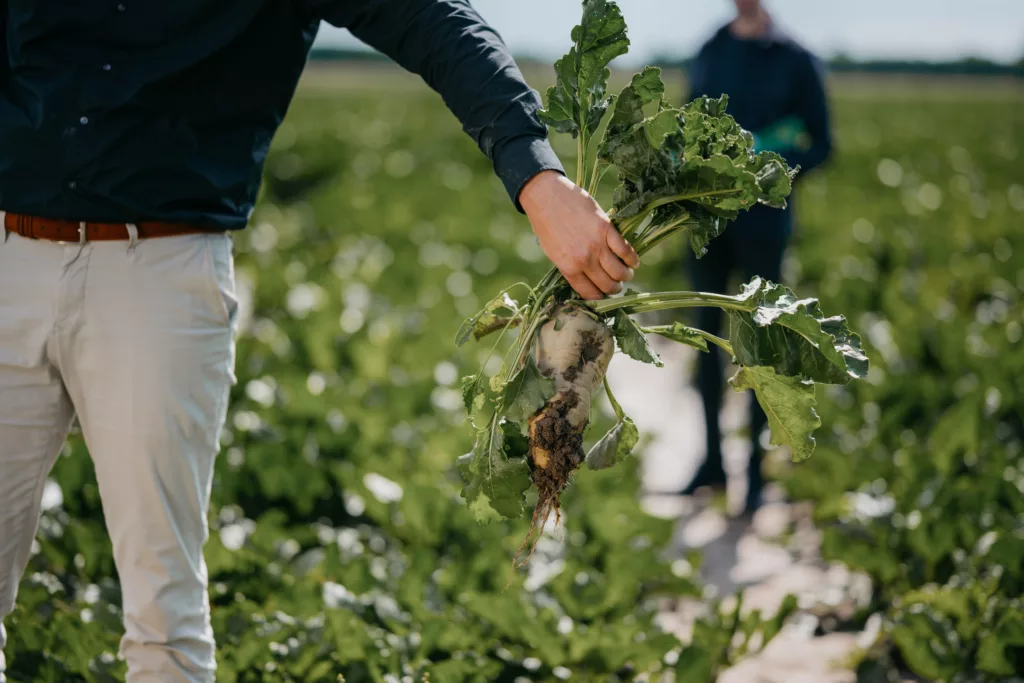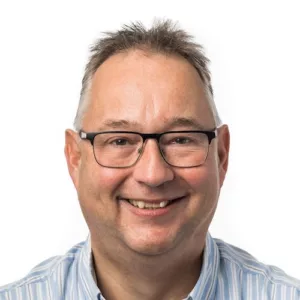How van Iperen supports the company, growers and the environment with smart and sustainable solutions
A good harvest is determined by a complex combination of factors, from the amount of rain to the fungal susceptibility of a crop and from minerals in the soil to the foliar fertilizer that is applied. Such a complex puzzle requires expertise from the grower, advice from the cultivation advisor and reliable data. For fertilizer supplier Van Iperen, LINKIT is helping develop an entirely new series of applications to support arable farmers. In addition, the applications help Van Iperen with sound cultivation advice and the sale of fertilizers.
The applications are also deliberately built in low-code to keep development fast, efficient and affordable. The combination of different apps aimed at various processes within the arable farm creates an extensive data model that growers can use to respond to weather conditions, legislation and business operations. In this way, Van Iperen, LINKIT, and the low-code platform OutSystems provide innovative support for the challenges growers face.
Leading the way with the latest technology
Vincent, head of IT at Van Iperen, proudly talks about Van Iperen’s head start in digital support. “More than twenty years ago, we already had the Level measurement service with a tank sensor for greenhouse horticulture. If the level of the fertilizers in the storage tank at the grower falls below a certain level, an order is automatically created. It prevents the grower from not being able to fertilize because he has too few fertilizers. We were also working six or seven years ago in arable farming with Precision Cultivation Plus (a targeted cultivation approach by dividing the field into small sections and mapping them out completely). The applications we are now developing build on that tradition.”
For example, the construction of eight arable farming applications has started, which together support all facets of cultivation. “Arable farming is under pressure due to climate change, increasingly strict laws and regulations, and customer requirements. Growers have to take more and more things into account, and we want to support them in this,” says Vincent. “Of course, we also benefit from this ourselves because it ultimately helps Van Iperen with the sale of products. In addition, we are always keen to offer growers added value. That is one of the reasons why we opted for low-code. OutSystems applications synchronize all the necessary data so that they also work when you are offline, which is a good addition if you spend a lot of time in the field.
OutSystems applications synchronize all the necessary data so that they also work when you are offline, which is a good addition if you spend a lot of time in the field.
Complete insight into cultivation
The first applications have now been completed and are in use. For example, there is My Company, where a farmer can enter his company, plots and annual plan. There is My Fertigation for calculating the ratio of fertilizers administered via fertigation hoses (drip hoses for water with fertilizer, ed.). My Storage is available for potato growers, in which, for example, the planning for gassing potatoes (to prevent them from running out) is arranged.
The team is currently developing My Cultivation, which combines various data to provide growers with advice. Based on, among other things, the weather, the soil, previous actions and other external inputs, this application predicts which crop treatments are required for optimal crop growth. Additional input sources are, for example, a barometer for stress in the crop, a calculation tool for the number of seed potatoes for maximum yield, or the PT+ application for precision cultivation.
The end goal? A complete insight into the cultivation, with everything the grower needs. And the longer the applications are in use, the more information will become available. It gives more insight, both to the grower and to the crop advisors. “Our product owner also has a great deal of affinity with arable farming,” explains Vincent. “So he knows what the target group is looking for.” Internally, the applications are also used by our representatives and specialists. Vincent: “Each crop consultant has its expertise. With the data in these applications, we can unlock a great deal of knowledge and provide clearer advice.” In addition, Van Iperen relieves growers because they only have to enter data once. “Because all applications work together, that saves hassle. Everything comes from one base.”
Added value for company, people and the environment
Vincent also talks about the ‘digital plant’, a model central to the ecosystem of arable farming applications. “It’s kind of Tamagotchi, actually,” he jokes. “With which we can predict what is needed and calculate the consequences of decisions. For example, the model calculates which minerals are needed. Based on that information, we can focus on selling the necessary products at the right times.” Vincent continues: “Ultimately, we want to move towards a complete decision support system, with which you as a grower can easily determine what you will do that day. So you can wake up, so to speak, and look at your phone to have all the information immediately available.
For example, with a pop-up or a message that says, ‘This week you have to fertilize with this product, and the best time for this is today around noon because then there will be rain. If today doesn’t work, the next best time is three days from now.’ As a grower, you need more and more insight, and you have to deal with water, fertilization, etc., more and more efficiently. These apps not only provide that insight, they also help motivate choices, for example, regarding environmental impact or legislation.” In this way, the applications together form a whole that relieves the grower. Not only that, monitoring crops and combining data in this way also minimizes problems with plants, maximizing the possible harvest and the healthiest possible soil. It is a win for the environment, the grower and Van Iperen, which can deliver exactly what the grower needs with uniform advice.
“As a grower, you need more and more insight, and you have to deal with water, fertilization, etc., more and more efficiently. These apps provide that insight and help motivate choices, for example, regarding environmental impact or legislation.”
Design sprints for a uniform appearance and efficient process
For growers, their harvest is most important. And although the sector is quite innovative, the grower focuses on something other than IT. “That is why we have always looked at how can we make it as user-friendly as possible for the grower?” says Vincent. “We immediately recorded that in the design, which is the basis for every app. We go for a simple and unambiguous user experience.” In addition, a wireframe, which has already been tested with end users, ensures faster development and turnaround time. In sprints of two weeks each, the focus was on the design, which now makes development much more efficient. Antonie, scrum master at LINKIT: “At the start of this assignment, we spent two months setting up a design structure, and we are now reaping the benefits.” Vincent agrees. “Involving an external designer has certainly been beneficial in that respect,” he says. “Design sprints and the design structure help to stick to one look & feel.”
“That is why we have always looked at how can we make it as user-friendly as possible for the grower?”
Strategic partnership for a fruitful collaboration
To build the applications, Van Iperen needed to scale up their capacity. LINKIT was the partner that could guarantee continuity and, with their ‘Team As A Service model’, put the right people on the job when needed. Therefore, Van Iperen has a multidisciplinary team consisting of a developer, tester, scrum master and designer. Antonie: “As soon as something new needs to be built, we pick it up, and when we’re done, we transfer everything to the organization so that they can continue with it. This model means we make the right expertise available and reserve the people this customer needs. This scalability is a challenge for many companies. Especially when scaling up and down in the meantime, for example, that is no problem at LINKIT.” Vincent agrees. “It is difficult to attract experienced people for such an assignment immediately. With LINKIT, we have those people, but we remain flexible. They think along with us in that respect.” Antonie: “As a strategic partner, we do not necessarily do what the customer asks, but we look at what the customer needs and how we can add the most value. For example, a project can take a shorter time. Still, it provides a much more sustainable and long-term relationship.”

About Van Iperen
Van Iperen has been active in the agricultural sector for a hundred years. They know the market like no other because they have visited customers since 1921. As a family business, they advise and support customers with challenges in their cultivation. They can add value to customers thanks to a wealth of experience and knowledge.

